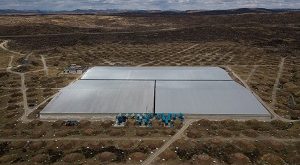Climate engineering has the potential to slow Antarctic ice loss

Climate engineering, also known as solar geoengineering, is a set of theoretical techniques that aim to slow or reverse climate change. One proposed technique is stratospheric aerosol injection (SAI), which involves spraying sulfate aerosols into the stratosphere, the layer of the atmosphere above the troposphere. These aerosols would reflect sunlight back into space, thereby reducing the amount of solar radiation reaching the Earth’s surface and cooling the planet.
A new study published in the Journal of Geophysical Research: Atmospheres has investigated the potential of SAI to slow ice loss in Antarctica. The study found that SAI could significantly reduce ice loss from the West Antarctic Ice Sheet (WAIS), which is one of the largest and most vulnerable ice sheets in the world.
The study used a climate model to simulate the effects of SAI on the WAIS. The model found that SAI could reduce ice loss by up to 50% by the end of the 21st century. This would translate into a sea level rise of about 1 centimeter (0.4 inches) less than if no SAI were used.
Also Read: Resigning as Pakistan Cricket Captain
The study’s authors say that their results suggest that SAI could be a useful tool for mitigating sea level rise from the WAIS. However, they also caution that SAI is a controversial technology with a number of potential risks, such as the disruption of the ozone layer and the impact on precipitation patterns.
The potential benefits of SAI need to be weighed against the potential risks before any decision is made about whether or not to use it. However, the new study suggests that SAI could be a valuable tool for slowing ice loss in Antarctica and mitigating sea level rise.
It is important to note that SAI is still a theoretical technology, and there is much that we do not know about its potential benefits and risks. More research is needed to fully understand the potential impacts of SAI before it could be considered for deployment.


